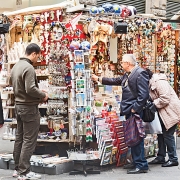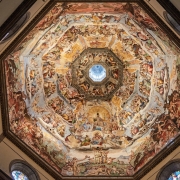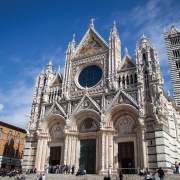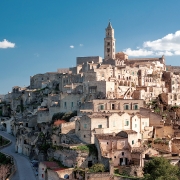
Etcetera
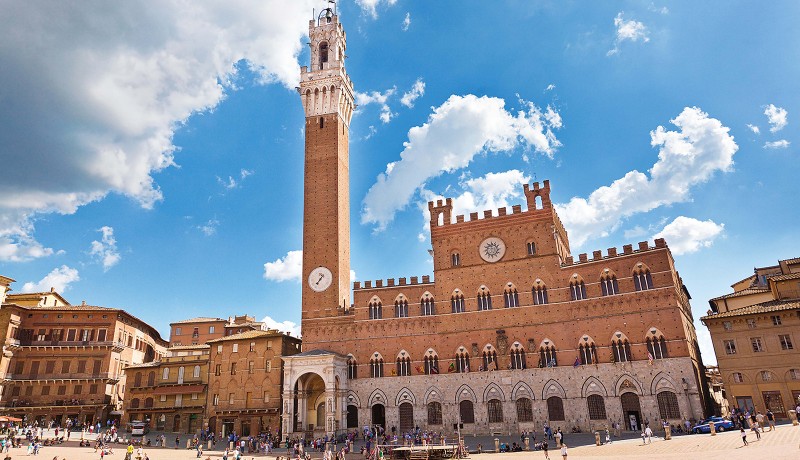
From the cave culture of Matera to the gothic architecture of Florence and Siena, Manjiri Prabhu shares some discrete tales.
The first time I ever heard of Matera was when I was invited to the International Women’s Fiction Festival in September. My curiosity peaked when I saw pictures of stark rocky landscapes, so unlike the Italy of my past travels. But it was only when I landed there that the full impact of what it meant to be in Matera—a UNESCO world heritage site—hit me.
From Paris to Bari by air and then an hour’s drive to Matera meant that I was exhausted by the time I arrived late evening in this historical town. The driver dropped off my bags in a cobbled square illuminated by orange-yellow streetlights. A long flight of uneven, cobbled stairs wound steeply down between houses and into eternity, as I stared in dismay at my heavy bags. I had been travelling for a fortnight and it hadn’t struck me for the slightest moment that bags with wheels would be useless in Matera. Luckily for me, the helpful receptionist of the hotel where I was staying appeared just then and gallantly carried my bags down the 100-odd steps. He was breathless by the time we reached the hotel!
My room, on top of a curvy line of steps—yes, more climbing—was my very first introduction to the ‘cave’ culture of this wonderful town. The huge hotel room was like a scooped out sitting room with rock walls, and led to the spacious, high rock-ceilinged bedroom. If that were not all, the hotel reception, lobby and dining area were also scooped out of rock in a similar manner; I was straightaway transported into the Flintstone era!
Every day was a unique experience. With fascinating decors of boats, bottles and anchors; quaint squares lined with sit-out restaurants; cobbled streets and old churches, Monacelle, where the festival took place, held me captivated.
The vast town of Matera looked like an abandoned stone village, but lit up like a magnificent bejewelled spread as the evening colour stole over the structures. Or, as a pamphlet very aptly put it, “transformed into a giant Nativity scene”.
Soon I figured out some interesting facts. Matera has been a World Heritage Site since 1993, especially the Sassi district with cave dwellings and churches made out of dugout rock. People resided in these caves till the 1950s, often living in stark poverty, until they were forced out by the government. Today, Sassi is an incredible, complex yet fascinating network of rock streets, dwellings, hotels, churches, stairways and you-name-it. It has also been a favourite shooting site for biblical films like Mel Gibson’s The Passion of the Christ in 2004.
During the working week, the lovely Matera felt abandoned and lonely, as if waiting for something, someone. It left me wondering about the deserted streets and eerie silences. And then it happened! By Friday evening the place was transformed. Rock shows sprung up at every square, pantomime processions and dancers thronged the streets, restaurants spilled over with visitors and laughter. The two faces of Matera struck me as exceptional. The change from silence and solitude to mirth and merriment was startling. I fell in love with Matera—earthy and dark fairytale-like—a place like no other.
Reluctantly parting from the caves and caverns of Matera, I headed to Florence, where my friend Enrica, her partner, and their hyperactive twins received me warmly. Early next morning, I set off towards the Piazza del Duomo, where the most popular tourist monument in Florence—the Cattedrale di Santa Maria del Fiore—another UNESCO World Heritage Site, is located.
Strolling down Santa Maria Novella train station into a side lane past the massive wall of the Santa Maria Basilica, it was easy to follow herds of people to the Cattedrale di Santa Maria del Fiore. With its marble off-white, pink and slate-green chequered, graphic gothic-styled architecture, this 5th century monument’s magnificence would never be ably reproduced in a photograph.
Lighting a candle at the tree of candles in the exquisitely structured Basilica, I prayed silently. The massive, colourful, frescoed high dome; a huge wall clock with frescoes of four prophets; stained-glass windows; historical paintings; marble floors with dates and glowing candle plants gave a solemn look and feel to the Cattedrale.
I walked into a kind of Parisian street with portrait artists busy sketching tourists on their propped-up easels. Landscapes and paintings of the Duomo were also on display. After idly watching the scene for a while, I headed through the side streets to the market. I had been there years ago. After losing my way a couple of times, I finally found the right lane and, my goodness, how the market had grown! It was now a crisscross of multiple lanes, lined shop after shop with leather goods, jewellery, hats, stoles and scarves. If the prices weren’t sky high, I would’ve probably purchased a suitcase full of stuff. Instead, I bought a couple of Italian silk scarves, bargaining and haggling with the Bangladeshi vendors. Finally, happy with my bargain, I made my way back to the station.
On my last day I decided on a quick visit to Siena, another lovely Tuscan hill town. On Enrica’s instructions, I took Bus No. 1 from the station, which halted at a central spot in the town of Siena. Once again following the crowd, I walked past cobbled lanes, elaborate curved squares with tall statues of Italian royalty or political figures, heading towards the historic centre—the famous Piazza del Campo—another World Heritage Site. The narrow lanes, with tall stone buildings almost merging overhead, were lined with picturesque shops selling colourful souvenirs. But it was the Piazza del Campo that took me by surprise, perhaps because I didn’t know what to expect. A staircase led down from under a low arch and opened into the largest saucer I had ever seen! It was as if a giant hand had scooped up a huge bowl of earth to create the town square. The Piazza, where horse races take place twice a year, was a startling revelation.
Tourists lazed on the shell-shaped floor, basking in the sun, while others clicked pictures of the Torre del Mangia, the magnificent tower at the square. After lounging for a while and walking the entire stretch of the square, I had a quick bite of pizza and browsed through the shops for souvenirs. I once again climbed the steps and headed for a quick look at the Siena Cathedral. The cobbled lane curved past quaint shops and opened into another square, introducing the 12th century cathedral—another marvel in marble of the Romanesque-Gothic style.
I wandered the sunny lanes of Siena, just breathing in the flavours of Italy or peeping into shops that resembled the caves of Matera. One shop in particular—resembling a scooped-out cave—was a magical place with piles and piles of colourful ceramic articles. I longed to transport it to India with me. But all I could do was gather memories and take them back with me.
As I spent the night playing with Enrica’s twins and chatting with her, I reflected on the contrasting nature of the three sites. Matera, with its startling almost biblical landscapes; Florence, with its exotic floweriness; and Siena, like a mélange of the two—distinct towns with distinct features. But they still represented the myriad faces of Italy, a country steeped in history and culture. With so much to absorb and assimilate, I realised it won’t be long before I come back to Italy again.
Photos: iStock Featured in Harmony — Celebrate Age Magazine July 2016
you may also like to read
-
Cracking the longevity code
Small yet impactful choices can be game-changers, writes Srirekha Pillai At 102, there’s no stopping Chandigarh-based Man Kaur, the world’s….
-
Home, not alone
While a regulatory framework is vital for senior-care facilities, the need of the hour is to develop an ecosystem to….
-
Birthday Girl
Published in a special edition to honour Japanese master storyteller Haruki Murakami’s 70th birthday, Birthday Girl (Penguin; Rs 100; 42….
-
A huge treat for music lovers
Published as the revised and updated second edition, Incomparable Sachin Dev Burman (Blue Pencil; Rs. 599; 470 pages) the authoritative….



